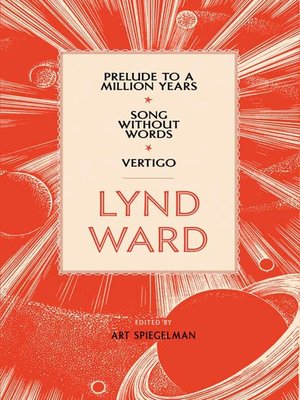Lynd Ward
ebook ∣ Prelude to a Million Years, Song Without Words, Vertigo (LOA #211) · Library of America Lynd Ward Edition
By Lynd Ward

Sign up to save your library
With an OverDrive account, you can save your favorite libraries for at-a-glance information about availability. Find out more about OverDrive accounts.
Find this title in Libby, the library reading app by OverDrive.



Search for a digital library with this title
Title found at these libraries:
| Loading... |
The second volume of collected woodcut graphic novels from a “brilliant and iconoclastic” author who has been compared to Frank Capra and John Steinbeck (Jonathan Lethem, New York Times–bestselling author of The Fortress of Solitude)
In this, the second of two volumes collecting all his woodcut novels, The Library of America brings together Lynd Ward’s three later books, two of them brief, the visual equivalent of chamber music, the other his longest, a symphony in three movements. Prelude to a Million Years (1933) is a dark meditation on art, inspiration, and the disparity between the ideal and the real. Song Without Words (1936), a protest against the rise of European fascism, asks if ours is a world still fit for the human soul. Vertigo (1937), Ward’s undisputed masterpiece, is an epic novel on the theme of the individual caught in the downward spiral of a sinking American economy. Its characters include a young violinist, her luckless fiancé, and an elderly business magnate who—movingly, and without ever becoming a political caricature—embodies the social forces determining their fate.
The images reproduced in this volume are taken from prints pulled from the original woodblocks or first-generation electrotypes. Ward’s novels are presented, for the first time since the 1930s, in the format that the artist intended, one image per right-hand page, and are followed by four essays in which he discusses the technical challenges of his craft. Art Spiegelman contributes an introductory essay, “Reading Pictures,” that defines Ward’s towering achievement in that most demanding of graphic-story forms, the wordless novel in woodcuts.
In this, the second of two volumes collecting all his woodcut novels, The Library of America brings together Lynd Ward’s three later books, two of them brief, the visual equivalent of chamber music, the other his longest, a symphony in three movements. Prelude to a Million Years (1933) is a dark meditation on art, inspiration, and the disparity between the ideal and the real. Song Without Words (1936), a protest against the rise of European fascism, asks if ours is a world still fit for the human soul. Vertigo (1937), Ward’s undisputed masterpiece, is an epic novel on the theme of the individual caught in the downward spiral of a sinking American economy. Its characters include a young violinist, her luckless fiancé, and an elderly business magnate who—movingly, and without ever becoming a political caricature—embodies the social forces determining their fate.
The images reproduced in this volume are taken from prints pulled from the original woodblocks or first-generation electrotypes. Ward’s novels are presented, for the first time since the 1930s, in the format that the artist intended, one image per right-hand page, and are followed by four essays in which he discusses the technical challenges of his craft. Art Spiegelman contributes an introductory essay, “Reading Pictures,” that defines Ward’s towering achievement in that most demanding of graphic-story forms, the wordless novel in woodcuts.






